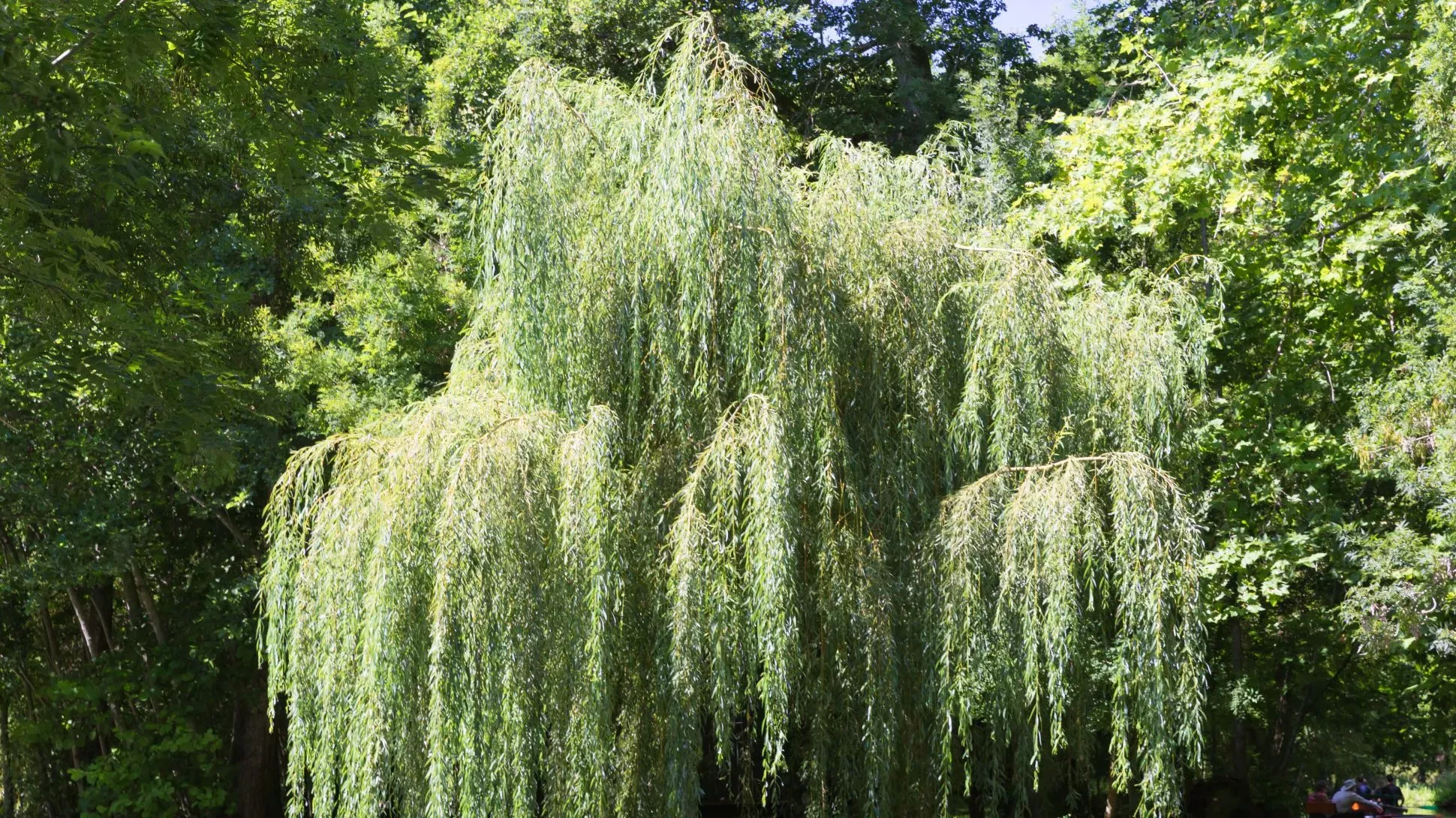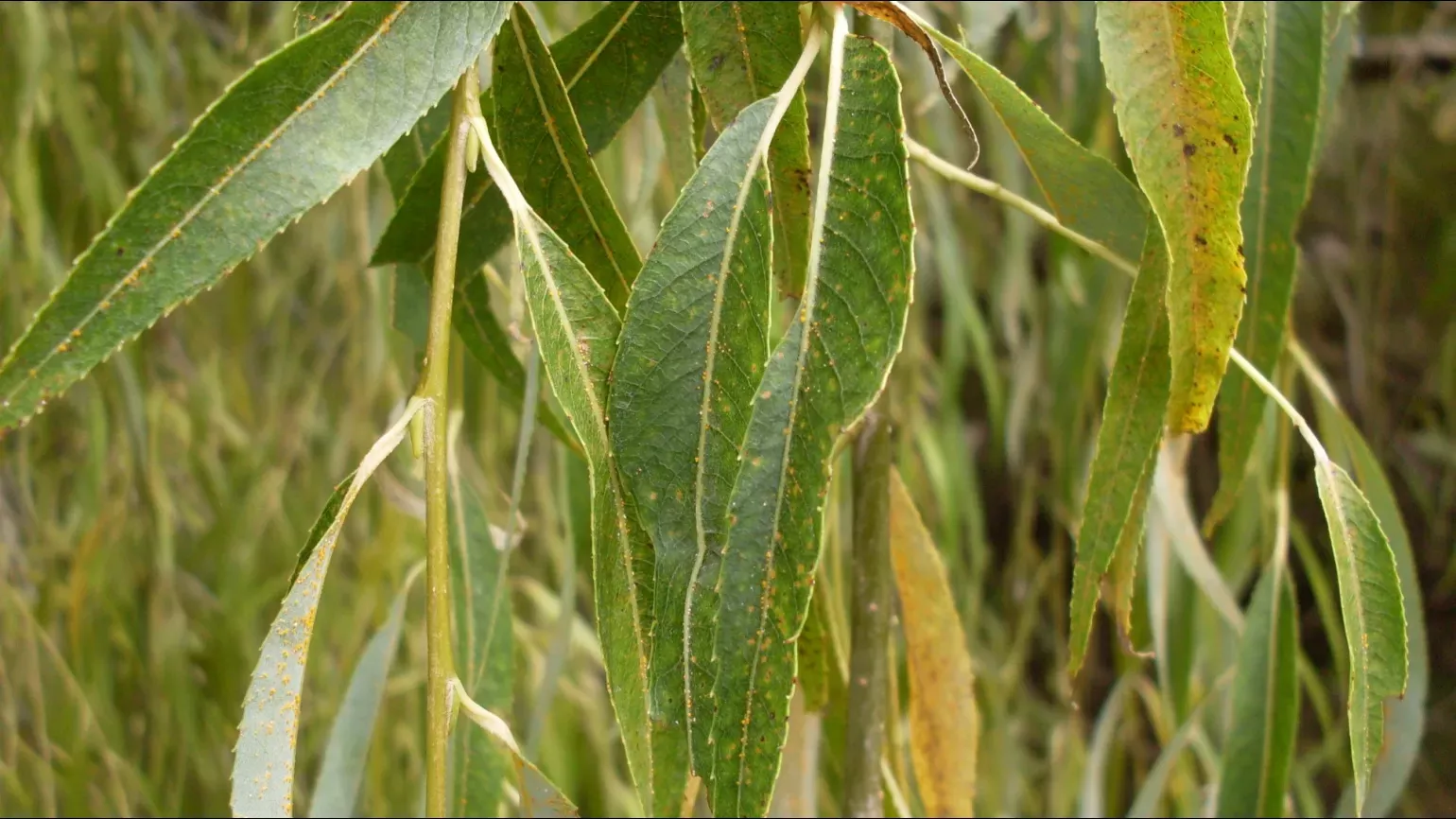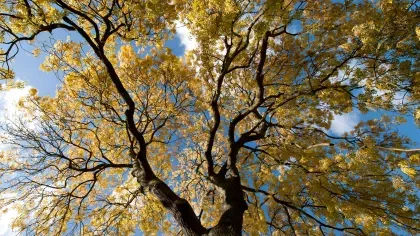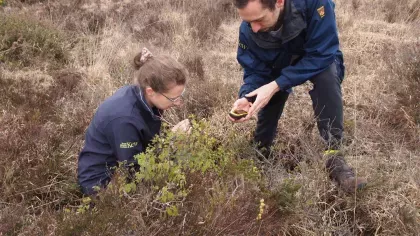
Weeping willow
On this page
Native to China, the weeping willow is now a common sight by lakes and rivers across the UK.
First introduced to England in the 18th century, the vast majority of weeping willows in UK today are female.
Alongside being a beautiful ornamental plant, the nectar-rich flowers of weeping willows provide a key source of food for insects like bees and butterflies.
The weeping willow name is also given to hybrids of Salix babylonica, including Salix × pendulina and Salix x sepulcaris.
The weeping willow is incredibly easy to propagate, as tree cuttings readily grow new roots when placed into moist soil.
Plant description
Weeping willows can grow to a height of around 15m. The trunk can appear to twist around and has silver-brown cracked bark. The leaves are long, narrow, pointed at the tip, and a light green colour. They are arranged in spirals on long yellow-green stems that dangle down from the crown of the tree. The flowers grow as yellow clusters (catkins) on the leaf stems in early spring. In some varieties, the branches can grow in spirals, or the leaves can grow in tight curls.




Plant uses
Cultural
In Chinese Buddhism, the weeping willow is associated with Guanyin, a Bodhisattva linked with compassion and mercy, and is often depicted with a willow branch.
Health
The bark of weeping willows has been used as a pain relief as it contains salicin, a compound similar to aspirin.
Did you know?
The species gets the name babylonica from Carl Linnaeus misunderstanding a reference in the Bible to willow-like poplar trees growing by the rivers of Babylon.
Where in the world?

Moist but well drained soils, usually near water, with plenty of sun.
Find it in our gardens
Kew Gardens
A botanic garden in southwest London with the world’s most diverse living plant collection.






